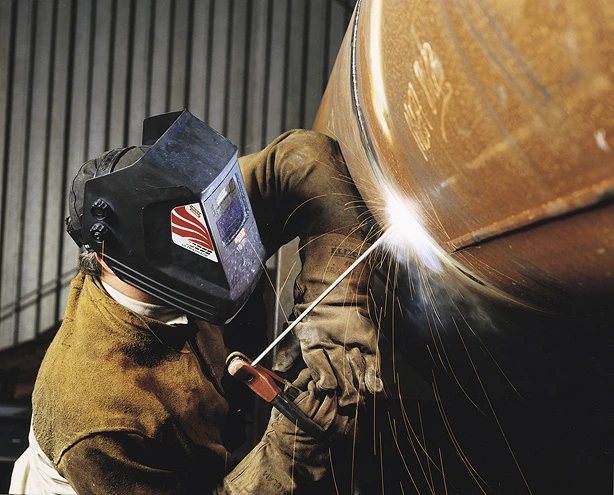Understanding Welding WPS: Comprehensive Guide for Welders
Understanding Welding WPS: Comprehensive Guide for Welders
Blog Article
The Ultimate Overview to Welding WPS Procedures: A Comprehensive Review for Welders
In the elaborate world of welding, Welding Procedure Specifications (WPS) offer as the foundation of ensuring quality, consistency, and safety and security in welding procedures (welding WPS). As we dive into the various components of a WPS and check out the details of qualification and certification, we will certainly reveal the crucial function these procedures play in the realm of welding.
Importance of WPS Procedures
Recognizing the value of Welding Treatment Specs (WPS) procedures is crucial for ensuring the top quality and honesty of welded structures. WPS treatments serve as a roadmap for welders, outlining the required actions, specifications, and materials called for to accomplish a sound weld. By sticking to WPS guidelines, welders can ensure consistency in their work, leading to trusted and structurally audio welds.
One of the primary reasons why WPS treatments are essential is their function in keeping weld top quality and integrity. Complying with the defined welding specifications and strategies outlined in the WPS helps prevent flaws such as porosity, fracturing, or insufficient fusion, which can jeopardize the strength and resilience of the weld.

Parts of a WPS
A Welding Treatment Specification (WPS) normally comprises crucial parts that information the certain requirements for performing a weld, ensuring consistency and top quality in the welding procedure. The key elements of a WPS consist of crucial variables such as base metals, filler steels, preheat and interpass temperature levels, welding processes, securing gases, welding positions, and post-weld heat treatment requirements.
Base steels refer to the materials being joined, while filler metals are used to fill up the void in between the base steels throughout welding. The welding process describes the specific technique to be made use of, whether it's gas metal arc welding (GMAW), shielded steel arc welding (SMAW), or an additional method. Welding positions define the positionings in which welding can be executed.

Qualification and Accreditation
Having established the necessary parts of a Welding Treatment Specification (WPS), the emphasis currently changes in the direction of the crucial elements of certification and accreditation in welding methods.

Accreditation, on the various other hand, is the formal acknowledgment of a welder's qualifications by an appropriate certification body or company. Welding accreditations are generally based upon the specific welding procedures, materials, and settings a welder is certified to collaborate with. Holding a valid welding accreditation demonstrates that a welder satisfies industry requirements and is competent to do welding click for source jobs to the required specs.
Developing a WPS
To establish a Welding Treatment Spec (WPS) that satisfies market requirements, cautious consideration of welding processes, materials, and operational parameters is essential. The initial action in developing a WPS is to identify the welding procedure to be used, such as gas steel arc welding (GMAW) or protected steel arc welding (SMAW)

Executing and Keeping An Eye On WPS
Upon wrapping up the comprehensive Welding Procedure Specification (WPS) that carefully details welding processes, materials, operational parameters, and quality guarantee procedures, the focus changes to efficiently applying and checking the well-known treatments. Execution includes making sure that all welders associated with the job recognize with the WPS and follow it carefully throughout the welding procedure. This calls for giving ample training and guidance to ensure adherence to the specified procedures. Monitoring the WPS entails continual oversight to validate that welding tasks line up with the documented specifications. Inspections, screening, and high quality control steps are important components of the monitoring process to determine any kind of problems or inconsistencies without delay. Routine audits and evaluations of the welding procedures aid in preserving consistency and top quality throughout the job. Effective execution and monitoring of the WPS are critical for ensuring the honesty, stamina, and safety and security of the bonded joints, ultimately adding to the general success of the welding project.
Verdict
In conclusion, understanding and adhering to Welding Procedure Specifications (WPS) is vital for welders to ensure high quality, uniformity, and safety and security in their work. By understanding the parts of a WPS, obtaining appropriate credentials and certifications, producing in-depth treatments, and carrying out and checking them click effectively, welders can enhance their skills and effectiveness in welding techniques. Following WPS procedures is necessary for producing top notch welds and conference sector criteria.
In the intricate globe of welding, Welding Treatment Specifications (WPS) serve as the backbone of guaranteeing high quality, consistency, and safety and security in welding operations. The welding process describes the particular technique to be used, whether it's gas steel arc welding (GMAW), shielded steel arc welding (SMAW), or one more approach.To develop a Welding Procedure Specification (WPS) that meets sector criteria, cautious factor to consider of welding procedures, products, and functional criteria is necessary. The initial action in developing a WPS is to identify the welding process to be used, such as gas metal arc welding (GMAW) or protected steel arc welding (SMAW)Upon completing the extensive Welding Procedure Requirements (WPS) that diligently information welding processes, materials, functional criteria, and top quality guarantee procedures, the focus changes to properly carrying out and keeping an eye on the well established procedures.
Report this page